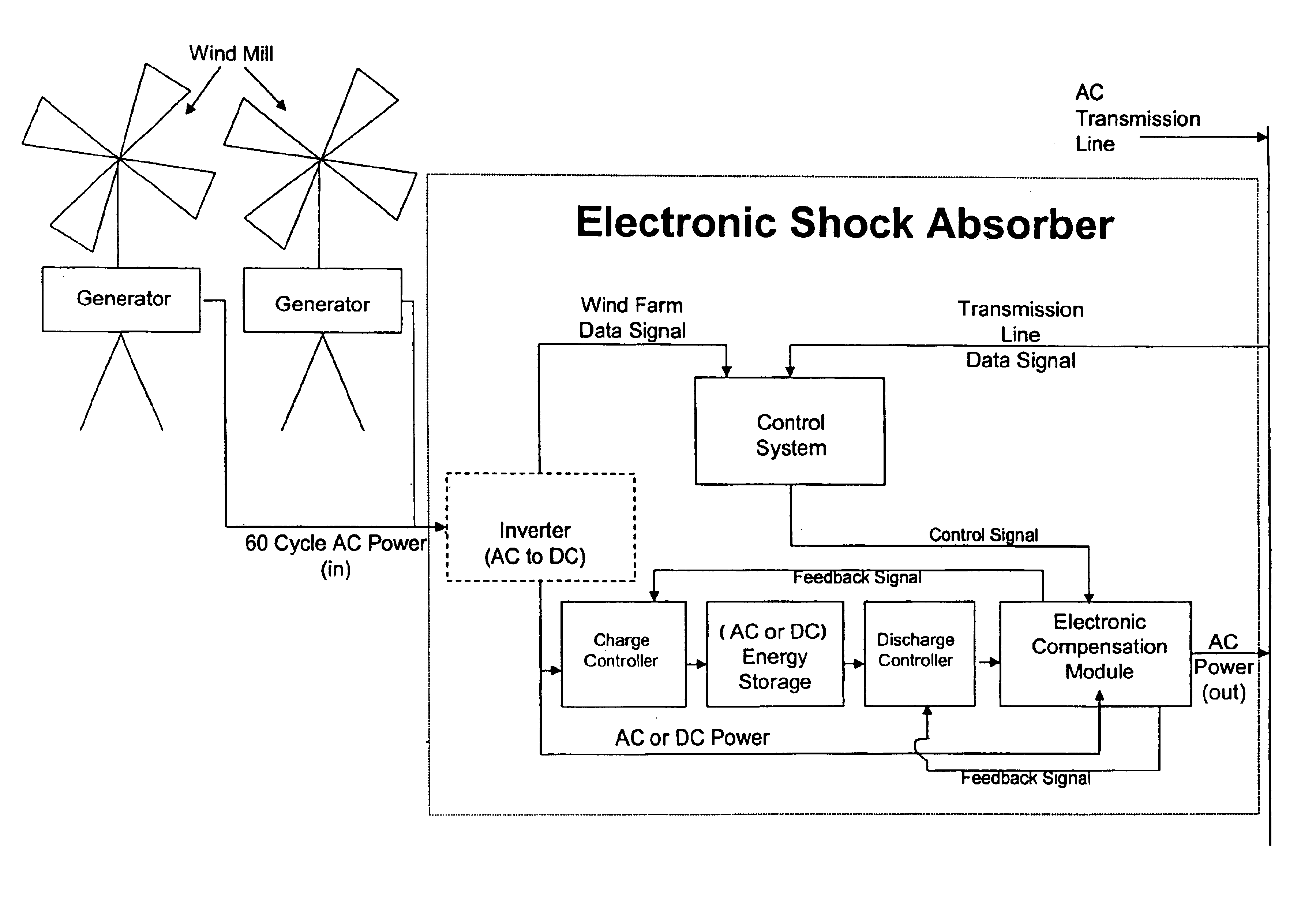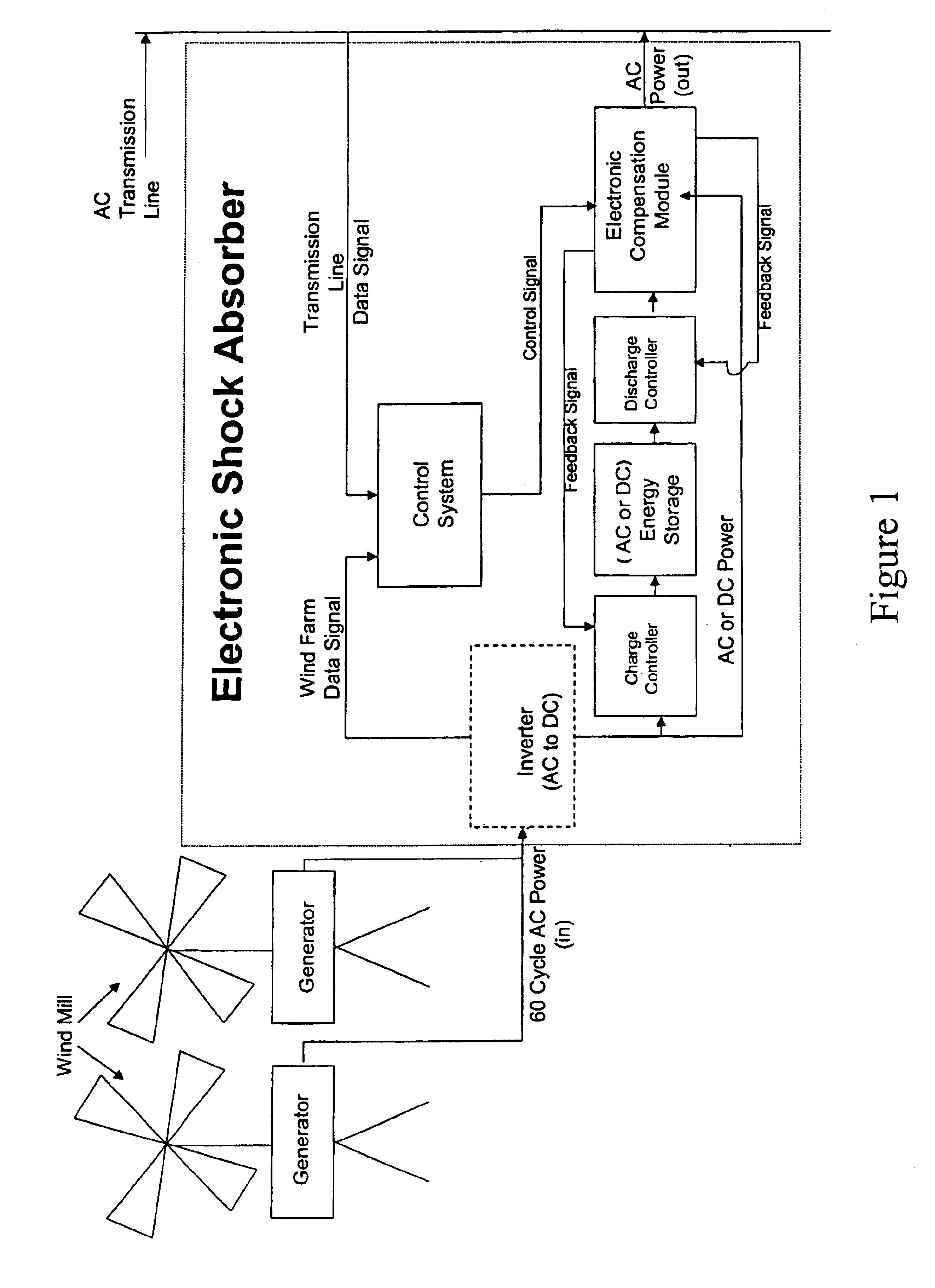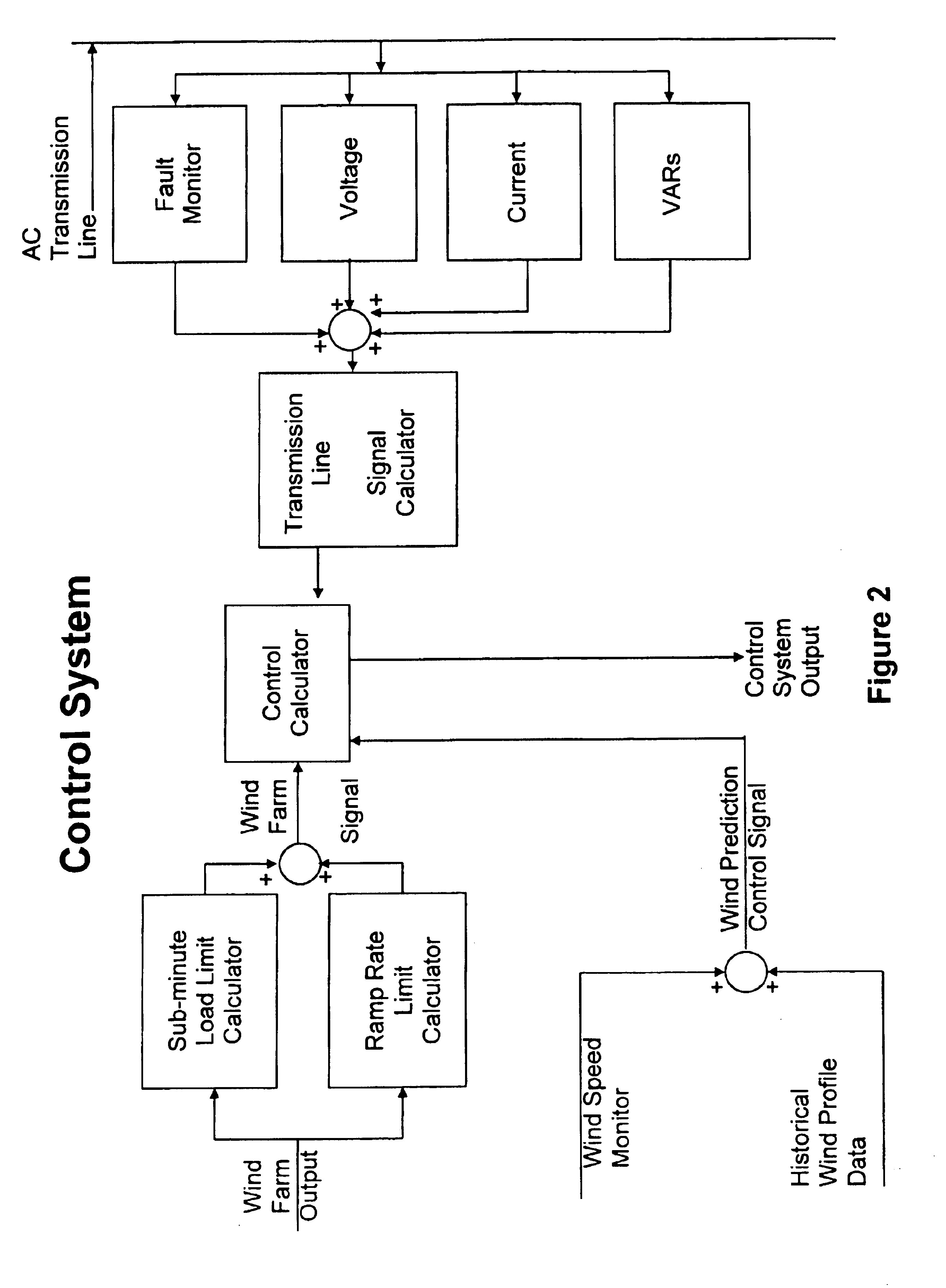Power control interface between a wind farm and a power transmission system
a power transmission system and power control technology, applied in the direction of electric generator control, machine/engine, greenhouse gas reduction, etc., can solve the problems of wind turbines being relatively unstable power sources, creating disturbances that propagate through the system, wind energy, etc., to prevent injection and smooth the overall fluctuation of power output
- Summary
- Abstract
- Description
- Claims
- Application Information
AI Technical Summary
Benefits of technology
Problems solved by technology
Method used
Image
Examples
Embodiment Construction
[0022]The following describes a preferred embodiment of a power control interface between the power output of an unstable power source such as a wind farm and a power transmission line to which the unstable power source is connected. The exemplary embodiment illustrates the function of the power control interface acting as an “Electronic Shock Absorber” which uses a combination of electrical energy storage and power electronics to isolate a power transmission system from wind farm energy fluctuations, while also enabling the wind farm to compensate for power disturbances on the line at the point of injection into the power transmission system. The Electronic Shock Absorber system can thus increase the overall capacity factor of the wind farm contribution to the grid, provide voltage support at the point of injection, and improve overall transmission system stability. The invention offers an unique solution to three major problems that have impaired wider use of wind energy as a rene...
PUM
 Login to View More
Login to View More Abstract
Description
Claims
Application Information
 Login to View More
Login to View More - R&D
- Intellectual Property
- Life Sciences
- Materials
- Tech Scout
- Unparalleled Data Quality
- Higher Quality Content
- 60% Fewer Hallucinations
Browse by: Latest US Patents, China's latest patents, Technical Efficacy Thesaurus, Application Domain, Technology Topic, Popular Technical Reports.
© 2025 PatSnap. All rights reserved.Legal|Privacy policy|Modern Slavery Act Transparency Statement|Sitemap|About US| Contact US: help@patsnap.com



